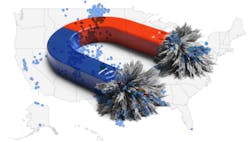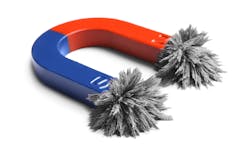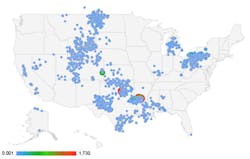Oil and gas extraction companies in the U.S. and Canada pump subsurface water (brine) containing significant amounts of lithium to the surface. Just a quarter of the lithium in that water would equal the current annual worldwide production, according to scientist at the Pacific Northwest National Laboratory (PNNL).
“Current approaches for extracting lithium, however, require pumping large volumes of water, thousands of gallons a minute, through an ion exchange filter, making them energy intensive and expensive,” says Pete McGrail, a PNNL researcher and recognized expert on rare earth metal recovery technology.
A team of PNNL researchers tackling the problem of finding an economic way to get valuable rare earth elements out of brine water from mining/drilling fluids, geothermal plants and seawater decided to look at the problem on the nanoscale. They came up with a nanotech process that miniaturizes most of the extraction and eliminates the need for ion exchange separators.
The process starts with nanoparticles of iron oxide, better known as magnetite. An absorbent shell that selectively binds to the compound being extracted is attached to each nanoparticle. Coated nanoparticles are put in containers with the brine and mixed. As they float around in the brine, particles of the targeted compound come into contact with them and attach themselves. A magnet is then used to reel in the magnetite-rich nanoparticles along with the critical material, which is filtered and recovered.
PNNL has several pilot projects lined up to test and refine the technology. In one, they are working with DOE’s Office of Fossil Energy, as well as the oil and gas industries, to harvest lithium from water generated by mineral extraction.
“By using the magnetic nanoparticles to attach to the lithium particles in solution, we expect the resulting lithium to be purer, thereby reducing the cost of further processing,” says Jerry Mills, CEO of Moselle Technologies, a start-up business that is piloting the technology in several global locations and has exclusive licensing on it. “And this will take out more than half the cost of lithium.”
Another project will investigate using the non-polluting technology to recover other critical materials. A third cooperative research project will explore that possibility. It will be carried out in New Zealand, where geologists have found cesium in its brines.
If these programs are successful, it could help the U.S. become a source of the critical minerals needed in electronics and energy production. Today, most of these minerals come from international sources and high-conflict regions. In fact, of the 35 materials deemed critical by the DOE, the U.S imports 100% of its need for 14 of them and more than 50% of 17 of them from high-conflict regions.
For a look at the process in action, watch this video:


